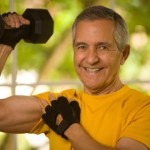By Steven Hefferon, CMT, PTA
People ask me every day, “Can you truly help me live a pain-free life?”
I understand why they feel they need to ask. It’s not because they doubt my credentials or experience. However, I am not often the first specialist they have turned to. Other reputable healers have been unable to bring about relief.
In many cases, the reasons for this failure are not the fault of the healer’s techniques. These professionals simply may not have been successful in communicating to the patient their own vital personal role in achieving lasting wellness.
So today I want to share with you, in the form of 7 questions, the characteristics of pain-free people.
1. Do you believe that you can get better?
Some people have been so disappointed by new treatments that, although they must keep looking, they secretly begin to doubt that relief really exists. Please, believe that despair by itself can make sound wellness methods fail.
Ask yourself what you have done to help yourself. Wellness is a matter of daily personal behavior. Do you make goals or set outcomes you want to achieve? If not, you are jeopardizing the medical success you so urgently need.
2. Are you ready to take responsibility for your condition?
Feeling powerless is your health’s single greatest enemy. Are you ready to master your fear, worry and doubt? I promise you this: you can turn things around. How? To start with, by studying to build up your knowledge, and then by holding on to faith that you can and you will get better.
3. Will you let others help you?
Will you listen to what I have to suggest? Will you try not to judge too quickly what I say, so as not to miss my point? In other words, can you give your ego a rest? Remember, there are two ways to get help. First, be willing to ask for help; and then, accept help and suggestions that others volunteer.
4. Are you willing to work at helping yourself?
The self-help that achieves pain-free wellness has four elements. One: physical changes you make in your lifestyle. Two: emotional adjustments that allow you to embrace whole-heartedly the new ways of living that will make all the difference. Three: understanding the logic of daily wellness, so that after a while you develop an instinct for the right way. And four: by appreciating the great importance that nutrition plays, even in the management and curing of physical pain.
5. Do you know what needs to happen for you to get better?
Diagnosis and treatment are only the first two aspects of successfully achieving a pain-free life. Diagnosis describes the exact nature of your medical condition; treatment consists of what must be done to correct it. Of course, a cure is the outcome we want for you, but to live the balanced life wellness requires, you also must understand what the treatment is intended to achieve.
6. Are you open to experiments?
To experiment with natural health does not mean to commit yourself to radical and unproven new therapies. On the contrary, the healthful means of wellness are time-tested and always intended to promote a balanced lifestyle.
7. Are you prepared not to quit?
People who suffer from pain can become desperate enough to try anything that promises relief. The treatments and lifestyle changes, the understanding of yourself and your body, which I will recommend have nothing to do with so-called “miracle cures” or “overnight success.” Yes, you will begin to feel better from the start, but a long-term medical condition requires a long-term commitment to reversing harmful habits. You need to establish the successful personal life-habits that are already bringing wonderful relief to thousands of my patients worldwide.
Can I truly help you live a more normal, happy and pain-free life? Yes – starting from the minute you are willing to help yourself.
Let’s start work together today, shall we?



torn medial meniscus in spring, 2008 from car accident, not healed; back pain, sometimes asthma, arthritis symptoms